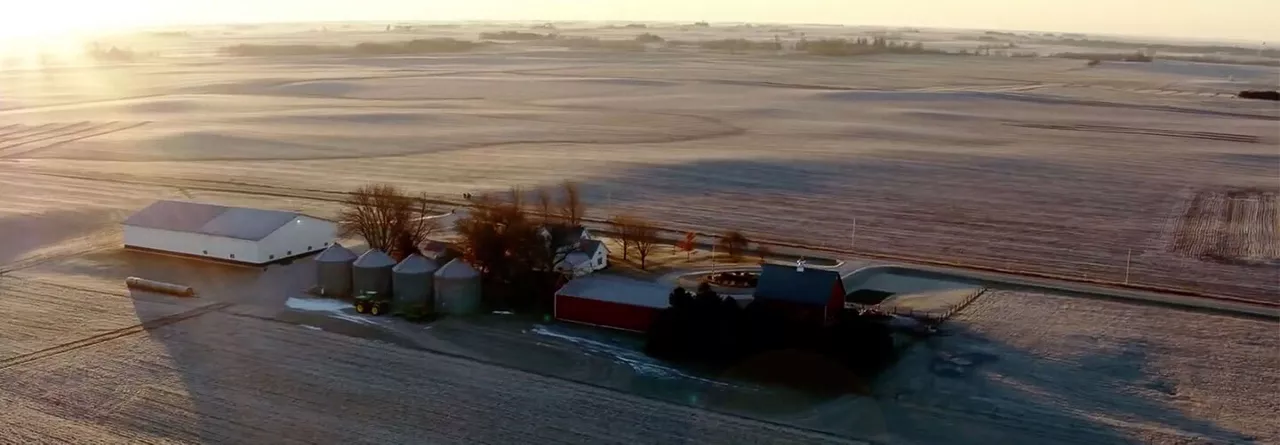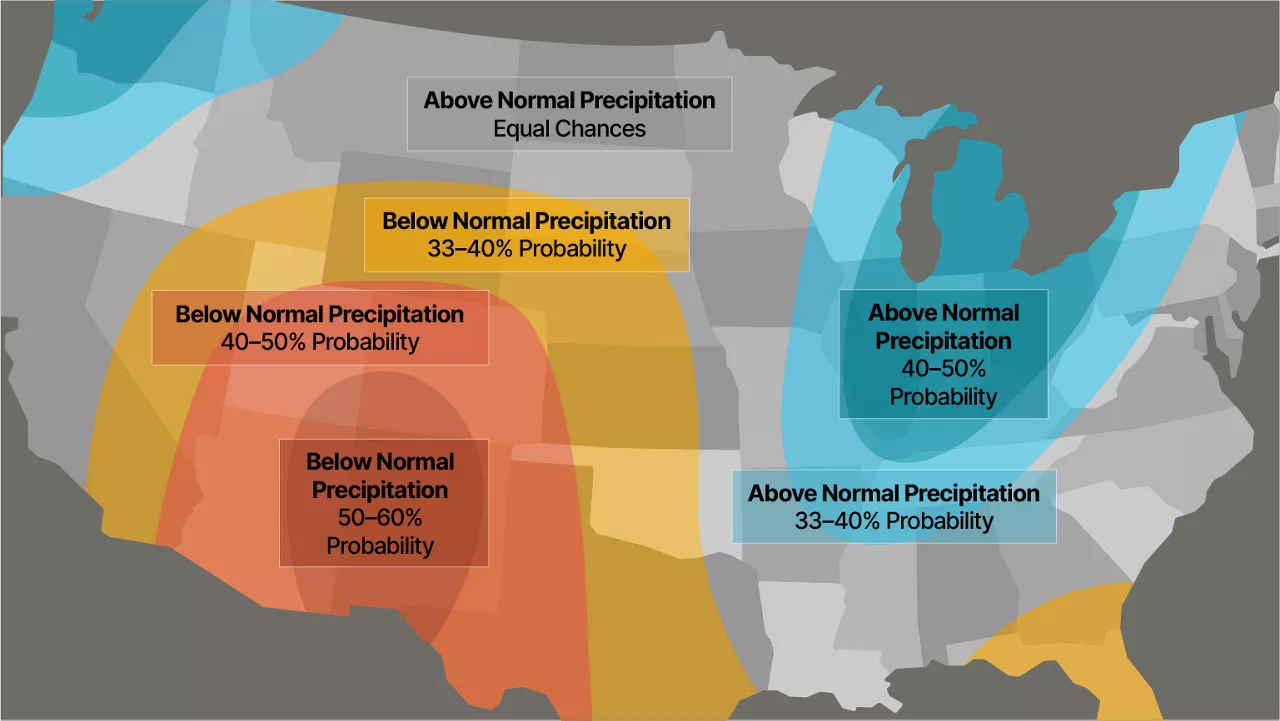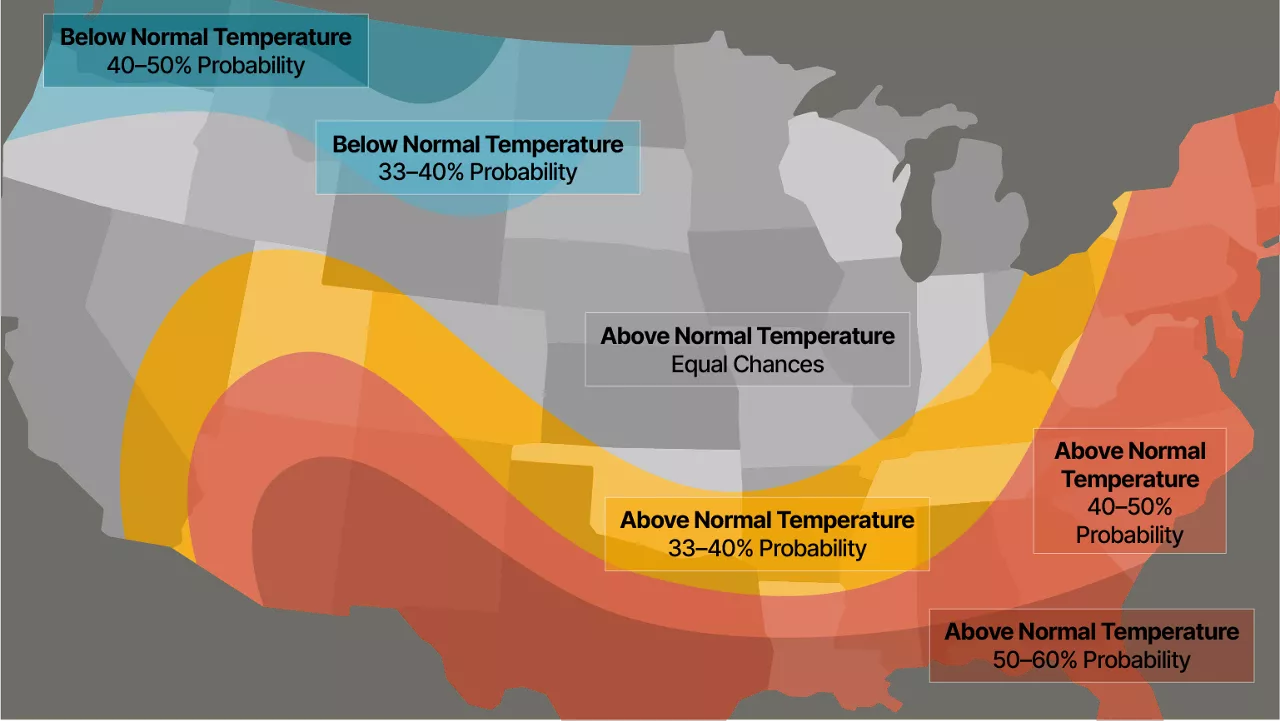
A Successful Spring Starts in the Winter: A Planning Season Checklist
Every good plan starts with a checklist. Here are some to-dos we recommend checking off for a productive planning season.
La Niña is out, ENSO-Neutral is in. This could mean wetter fields in the Ohio River Valley, warmer temps across the southern and eastern U.S. Corn Belt, and a toss-up everywhere else. Here’s how to prepare for the 2025 corn and soy planting season.
It’s official farmers. La Niña is gone for spring 2025 planting. Instead, we will be planting with our less infamous, but less volatile friend ENSO-Neutral. That means less consistent weather extremes and a solid dose of uncertainty when it comes to forecasting spring rains, depending on your region.
Based on current models, farmers near the Ohio River Valley will see wetter than normal conditions. That’s most of Illinois, all of Indiana, Michigan, Ohio, and parts of north and western Kentucky, among others. Extra rainfall in early spring can lead to saturated soils, muddy fields and delayed planting schedules. If you’re farming in these regions, or even nearby, you should expect wet fields from now until May.
With FieldView™, you can compare five, 15, and 30 year precipitation averages against current conditions. By combining real-time weather updates with this long-term historical data, FieldView helps you better understand local conditions and plan accordingly. It won’t change the forecast, but staying informed puts you in a stronger position to handle whatever this season may bring.

Using data from NOAA, we are forecasting the seasonal precipitation outlook for the period of March through May 2025.
Extra moisture often leads to late planting, a challenge that can impact farm income and overall profitability. That’s where smart farming approaches, supported by precision technology, can really make a difference.
FieldView™ moves farmers beyond broad, generalized estimates that work for most people. But what you need are precise, field-by-field forecasts. By integrating real-time weather forecasts with historical climate data, FieldView helps growers pinpoint the ideal planting windows and adapt schedules accordingly. You’ll know which fields are ready to plant without wasted trips out to the field, only to discover it’s much too muddy to plant.
Based on current temperature models, many Corn Belt states are likely to see warmer-than-normal conditions this spring. This is especially true for those in the southern and eastern regions, including southeastern Indiana, most of Ohio, and likely all of Kentucky and Tennessee. Meanwhile, North Dakota and parts of South Dakota may trend cooler this year. For the rest of the U.S. Corn Belt, right now you’re falling in the “equal chances” category, it’s a toss up. Keep a close watch on local forecasts so you can adjust as temperatures shift from now until May.

Based on NOAA data, we are forecasting the seasonal temperature outlook from March to May 2025.
No matter what ENSO-neutral weather has in store this spring, having good digital tools on your side can help. Precision farming tech like FieldView helps you track real-time weather data, historical trends, and rainfall accumulation so you can make informed decisions for your fields.
See how much rain each field has received, including totals over time and in the past 24 hours. This helps determine when the soil is dry enough for planting or fieldwork.
Unlike general weather reports, “Radar - Next 6 Hours” on FieldView delivers field-specific forecasts to help farmers adapt schedules in real time. Just find your field, hit play, and watch as FieldView projects how long you have before rain arrives.
An ENSO-neutral spring may not bring the dramatic extremes of La Niña or El Niño but it does create variability across the Corn Belt. Farmers in the Ohio River Valley should prepare for above-average rainfall while others will watch shifting forecasts closely. Leveraging digital farming solutions—from smart farm strategies to farm management software—can help you navigate unpredictable weather and optimize planting windows, even if delays arise.
Equipped with FieldView and other agricultural technology platforms, you’ll have the insights you need to manage planting schedules, track field conditions in real time and use precision farming technology to adapt on the fly. By staying nimble and informed, you can maximize your chances of a successful season—no matter what Mother Nature throws your way.